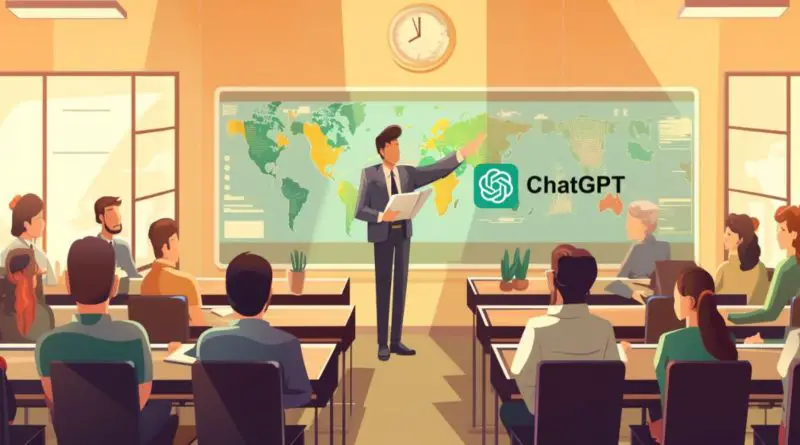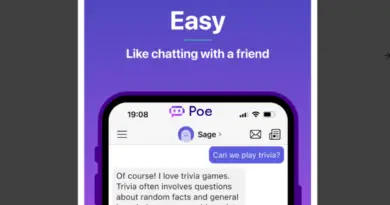Can Teachers Tell if You Use ChatGPT? [Students, Take Note]
The education sector has not been left out of the influence of ChatGPT, an AI chatbot with the ability to generate highly articulate and original text. While educators still grapple with whether its use by students amounts to cheating, plagiarism, or both, students continue to use it for schoolwork. As a student, it is only natural to wonder if teachers tell you if use ChatGPT.
Teachers can tell if you use ChatGPT for your assignments and general schoolwork. There are various tools that detect ChatGPT use and new software is being constantly developed. Teachers can also detect that you used ChatGPT if the writing style conspicuously differs from yours. Fortunately, you can avoid detection using different methods.
In this article, we go into detail about how teachers can spot ChatGPT use in work that students turn in and how to avoid such detection as a student. Dig right in.
Can Your Teacher Know if You Use ChatGPT?
The selling point of ChatGPT is its ability to generate entirely original work that is unique even in comparison to its own previous response to similar prompts. This can lure users into a false sense of security that they can successfully pass off ChatGPT’s responses as their own work.
We can also tell you for a fact that ChatGPT won’t snitch on you. However, despite the originality of ChatGPT-generated work, there are methods your teacher can employ to ascertain whether ChatGPT was used in your work. And no, it’s not just intuition.
A myriad of tools to check ChatGPT use exist and are being constantly improved upon. There are also tell-tale signs that your teacher can look out for when evaluating your work.
Interestingly, none of these methods are entirely foolproof. Regardless, a perceptive teacher can effectively use a combination of these methods to find out whether you utilized ChatGPT in your schoolwork.
Different Ways Your Teacher Can Detect You Used ChatGPT
As already stated, there are several ways your teacher can tell if you used ChatGPT for schoolwork. Top of this list is anti-plagiarism software like Turnitin. While the traditional use of such software is to run written work through a database of previously published text, Turnitin now boasts of an AI writing indicator that shows the percentage of the text that is AI-generated.
Asides from general-purpose anti-plagiarism software that has simply integrated AI detection, other software has been specifically developed in direct response to the rising use of ChatGPT in academic settings. These include GPTZero, Detect GPT, Zero GPT, Originality.AI, and AI detector by CaS, among others.
In addition to these tools, while ChatGPT typically generates human-like texts, there are times it does not do so all that convincingly. For instance, it can sometimes generate excessively verbose text or use unusual phrasing in its responses to prompts. It also has the tendency to be overly repetitive. These can cause raised eyebrows and suspicion of ChatGPT use.
Also, remember that your teacher is not a machine. They are familiar with how you write and will definitely notice if your submitted work that deviates from your regular writing pattern or employs words that are more complex than your usual vocabulary level.
ChatGPT Detectors Are Not Always Correct
It might be good news for you that ChatGPT detectors are not always accurate. While most detectors boast a high percentage of accuracy, with ZeroGPT claiming to be 98% accurate, there is no way to know if a particular feedback is accurate. There have been a number of instances where human-written text was returned as AI-generated and vice versa.
In fact, OPen AI API Key, a detector developed by the same company that created ChatGPT, Open AI, has a myriad of limitations. For example, it requires a text to contain a minimum of 1000 characters to detect whether it was AI-generated or written by a human.
Teachers are thus reasonably wary of overreliance on results from automated ChatGPT detectors as it would be unfair to conclude that a student has employed the use of ChatGPT based on the result of a detection tool that might very well be wrong.
Watching out for deviation from your usual writing pattern and use of complex words is not also without its margin of error, as it is expected that students improve in how they write.
Furthermore, there are students whose vocabulary is far beyond their grade level and is constantly evolving. It is obvious to educators that it would be unfair to punish students for academic improvement on the basis of suspected ChatGPT use.
Has Anyone Been Caught Using ChatGPT?
Yes, several students have been caught using the chatbot for assignments and exams since its release in November 2022.
A mere couple of weeks after its release, professors at American Universities, Durham University and Northern Michigan University detected the use of ChatGPT in the essays turned in by three students.
Also, a college student in the United Kingdom was caught using ChatGPT for an essay just about a month ago. Quite recently as well, as many as twenty undergraduates were caught using ChatGPT.
This isn’t just happening in institutions of higher learning though. As many as 26% of K-12 teachers in the United States have caught a student using ChatGPT.
However, a recurring sentiment among educators is that AI detection tools are not sufficient proof of ChatGPT use and it will be difficult, if not impossible to prove ChatGPT use without the students’ admission.
How to Bypass ChatGPT Detection [For Students]
An advice that will serve you well is to never copy ChatGPT-generated text verbatim. Revise any response it generates to minimize excessive repetitions and make the text read in your own writing voice. Combining AI-generated text with human writing makes the AI element nearly impossible to detect.
It is also important to maintain the same writing style throughout the work. A distinction in the writing style in the practice and theory sections of an essay was what set off alarm bells that a college student in the United Kingdom had used ChatGPT.
In addition, complex words that you wouldn’t typically use should be left out or exchanged for simpler synonyms.
Educators have also pointed out that while text generated by ChatGPT is usually free of grammatical errors, it typically lacks the requisite depth of insight into the topic that a human would have. It is thus advisable to use ChatGPT-generated text as a guide and edit to write your own thoughts about the topic into the text.
It is also regular knowledge that ChatGPT is not exactly known for the accuracy of the information contained in its responses. So, you definitely want to double-check any statement of fact it presents.
Is It Safe to Use ChatGPT for Essays?
ChatGPT can be safely used for essays though you might want to check whether your institution has specific policies banning or regulating its use.
In using ChatGPT for your essays, think of it as a source of inspiration to get you started instead of a content creator that does all the work for you. You can treat it as a writing assistant that you bounce ideas off of. At the end of the day though, you have to own the work produced. You are still responsible for conducting proper research and utilizing your writing skills.
As a first step, have a general outline you’re following for your essay and what you aim to achieve with it. Then, ensure you are creative with the prompts you feed ChatGPT, making sure to use the keywords that are essential to your work.
The text generated by ChatGPT should be skillfully paraphrased. A paraphrase doesn’t negate the need for attribution, however. Academic writers have increasingly begun to cite ChatGPT as a co-author of essays where its output was used.
Some journals do not allow this but require that attribution be given in the relevant portion of the essay. It is essential to confirm the attribution rules applicable to your particular instance.




